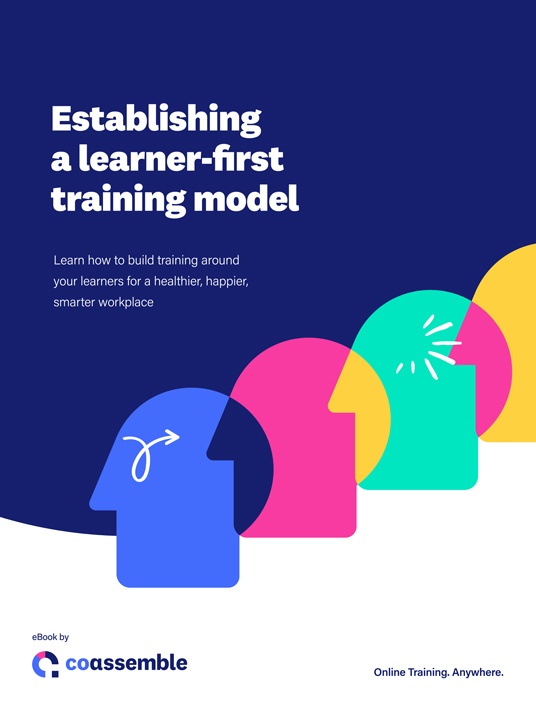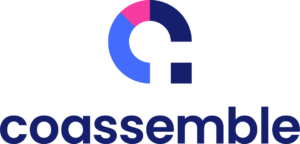The Learner-First Training Model: How To Structure Learner Pathways
The learner-first training model is simple but radically different from the way a lot of organisations train.
In a learner-first training approach, trainers always start with the learner. The learner is the basis for every aspect of a company's training strategy, from the company's learning goals to their learner pathways, to the tools that they choose to train and the way they design their training.

Whilst this may seem like common sense, it's actually not what a lot of trainers do.
Structuring Learner Pathways: The First Step In The ‘Build’ Phase
The learner-first training model places great emphasis on understanding current learners and learning processes before any training is actually designed and disseminated. The 6 stages of implementing learner-first training are:
- Evaluate
- Build
- Design
- Test
- Disseminate
- Evaluate
As the first step in the ‘build’ phase, structuring learner pathways should only come after trainers have a comprehensive understanding of who they are training and what their learning goals are. This can be done by creating learner personas and identifying clear learning goals.
Creating learner personas and identifying learning goals are key to building out learner personas, and we highly recommend completing both steps before structuring learner pathways.
What Is A Learner Pathway?
A learner pathway is an entire journey that your learner takes from the moment they realise they need to complete training, to the moment they finish learning and begin applying their knowledge. This includes post-training assessment and retention exercises.
There are 3 stages in a learner pathway:
- Pre-learning
- Learning
- Post-learning
The pre-learning stage covers the point at which a learner realises they must complete training, to the point at which they begin completing a training resource. How is your learner notified that they have new learning to complete? How do they then access that learning?
The pre-learning stage may look something like this: the learner is notified of new training via email, accesses that training by clicking a link in the email that takes them to a website, logs into the website and is taken to company LMS, finds their new training resource on their LMS’ student dashboard.
The learning stage covers the point at which a learner begins completing their formal learning to the point at which they end it. How is learning being delivered? Is it face to face, online, or blended? Does it happen in one sitting, or across many?
Following on from the example above, the learning stage may look something like this: the learner accesses an 8-screen eLearning course consisting of an introductory screen, 4 text-based content screens, a video screen, and 2 quiz screens, taking 25 minutes to complete.
The post-learning stage covers the point at which a learner completes their formal learning to the point at which they apply it. Does post-assessment take place? Are there retention exercises for the learner? Do they have an opportunity to share the fact that they’ve completed training? How long is the gap between completing, learning and applying it?
To finish our example: the learner finished the eLearning course, they are given an accreditation and the opportunity to share that accreditation on their LinkedIn profile or via their work email; over the next 5 days, the learner is drip fed summary content via email to promote retention of knowledge; the learner completes a post-assessment quiz via email; the learner applies knowledge in the field within 10 days.
Identifying Current Learner Pathways
To identify current learner pathways, you’ll need to lay out each stage of the learner journey to see every step your learner takes on the path to completing their training. It’s easiest to do this via a flowchart or diagram.
In large companies, multiple trainers may be in charge of different sections of learner pathways, requiring trainers to seek out others in order to comprehensively map our learner pathways. In smaller companies, one trainer is often responsible for all learning; they should have full clarity of learning pathways without needing to consult others.
Remember that in the learner-first approach, learners are treated as individuals. As such, different learners will have different learner pathways. Karen from Head Office, for example, may discover she has training when her boss walks over to her desk and tells her. She might then complete that training on a computer. John from Sales may discover he has training from a push notification sent to his mobile, which he then completes on his phone.
Whilst it’s every trainer’s dream to be able to create individualised training, most trainers simply won’t have the time to map out every single learner’s journey to knowledge. Instead, we recommend establishing learner personas and mapping out learner pathways for each persona based on the 3 stages identified above.
Structuring New Learner Pathways
Once you’ve mapped out your existing learner pathways, you’ll quite quickly begin to see gaps in each pathway. There may be areas in which your learners may not have full clarity on what is required of them or what to do next, such as a notification email with no link to training. There may be gaps in training from the trainer side; you may identify that learners complete one long training module in a single sitting and never revisit it. You may also find that there are stages of your learner pathways that can't be tracked or are prone to human error, such as trainers manually informing learners that they have the training to complete. All of these issues will be easily identified and fixed if you’ve properly identified current learner pathways.
To structure new learner pathways, simply go through each of your learner pathways and assess how each step could be improved, or whether further steps need to be added. This will be easier if you’ve defined your learning goals, as you’ll have an idea of what knowledge you’ll be communicating to your learners. Key questions here are:
- Does my learner know exactly what is required of them in this step to pass to the next step of their pathway?
- Does this step suit my learner (does it suit their learning habits, timings and preferred method of delivery)?
- Do I have full clarity on what my learner is doing at each step of their pathway (i.e., is it trackable)?
- Does my learner have an opportunity to share that they have completed learning (i.e., social learning)?
- Does the timeline of learning make sense?
So You’ve Got Your Learner Pathways, What's Next?
Now it’s time to evaluate your tools and tool requirements. When rolling out training, as a lot of trainers start with this step, you’ll be coming into it with clear knowledge of who your learners are, how they learn, what they need to learn, and how they’ll access and share their learning. In other words, you’re well prepared! Stay tuned for our next article, on identifying your tools and tool requirements.
Wondering how to implement your own learner-first training model? Download the eBook Establishing A Learner-First Training Model and discover the step by step process on how to perfectly execute the goal of making the learner have success. Also, discover how to incorporate career mapping into your digital training strategy using a learner-first approach through the Webinar 6 Steps To Incorporate Career Mapping Into Your Digital Training Strategy.








